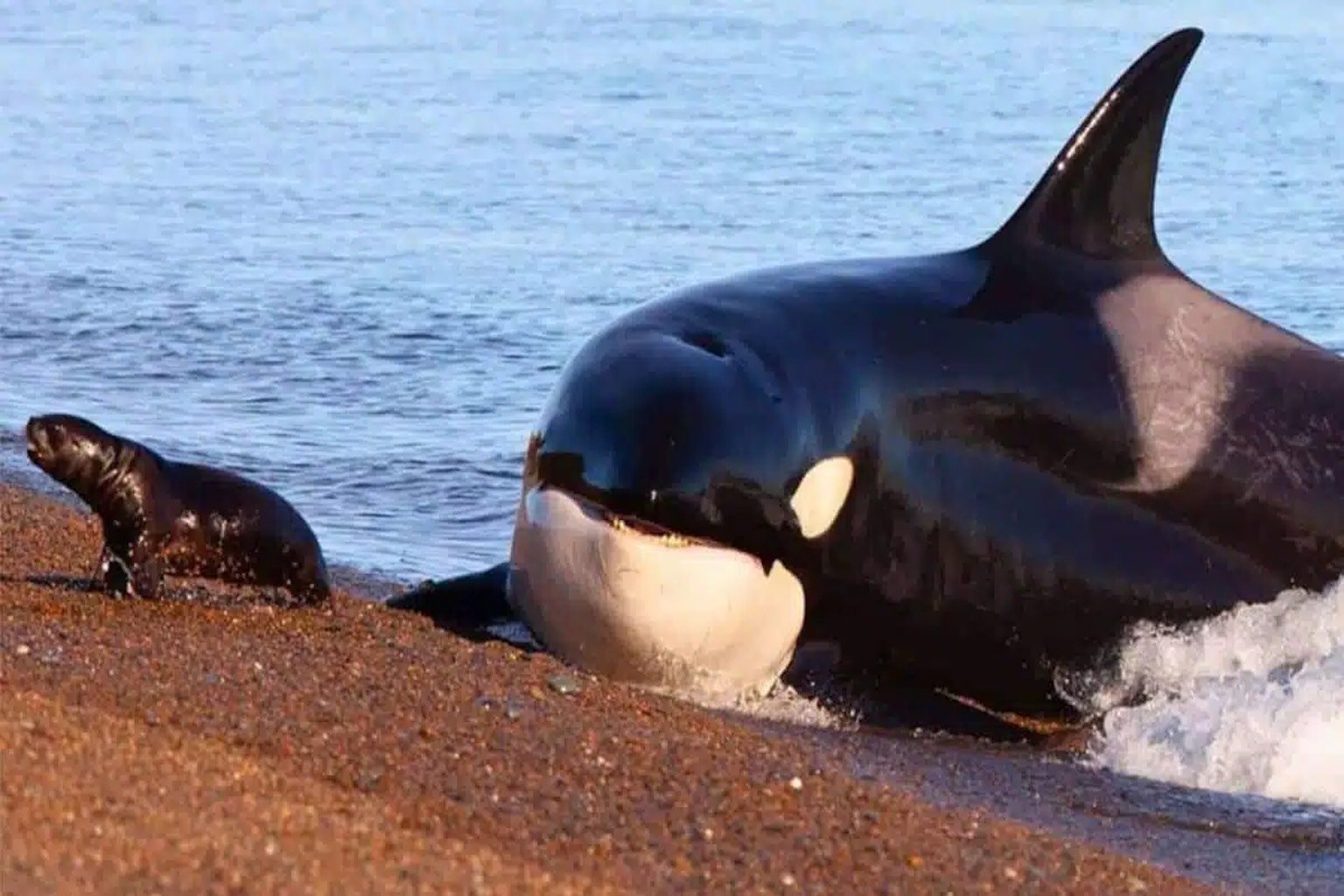The story of cetaceans is one of evolution’s most remarkable transformations. Around 50 million years ago, land-dwelling mammals slowly returned to the oceans, eventually giving rise to the whales, dolphins, and orcas we know today. Unlike other marine mammals such as seals or sea lions, which can still move awkwardly on land, dolphins and orcas completely severed their terrestrial ties.
Over millions of years, their bodies changed in ways that made a return to land biologically impossible. Their forelimbs reshaped into flippers, streamlined for efficient swimming, while their hind limbs disappeared entirely. Walking, once natural for their ancestors, is no longer possible.
Their respiratory system also evolved for marine life. Instead of a standard nose, dolphins and orcas developed a blowhole positioned on top of the head for easier breathing at the surface. Their lungs and oxygen-processing abilities allow them to dive deep and stay underwater for extended periods. These changes are irreversible—once evolution locked them into aquatic life, there was no turning back.
Specialized adaptations that lock dolphins and orcas to marine environments
The unique physical and behavioral traits of dolphins and orcas show just how specialized they have become for life in the ocean:
-
Streamlined bodies to reduce drag in water
-
Modified flippers with extra finger bones for precision movement
-
Powerful tail flukes that provide speed and agility
-
Complete loss of hind limbs, eliminating any land mobility
-
Echolocation systems for navigation and hunting in dark or murky waters
But their adaptations go beyond physical traits. Orcas live in complex social groups with distinct vocal dialects, passing hunting strategies across generations. Dolphins demonstrate intelligence and creativity, including tool use in certain populations. Their large brains and advanced neural systems are shaped specifically for problem-solving in aquatic environments.
Here’s a closer look at some key features:
| Adaptation | Function | Irreversibility Factor |
|---|---|---|
| Blowhole | Efficient surface breathing | High |
| Hydrodynamic body | Minimizes resistance in water | Very High |
| Absence of hind limbs | Improves swimming efficiency | Complete |
| Echolocation | Navigating and hunting underwater | High |
Conservation challenges for species with no evolutionary escape hatch
While these adaptations made dolphins and orcas ocean specialists, they also left them vulnerable. With climate change, ocean warming, and pollution, their survival is under threat. Unlike some species that can shift habitats or adjust behaviors, dolphins and orcas are locked into their marine environment with no evolutionary way out.
This reality means conservation must take a different approach. Protecting dolphins and orcas depends on preserving ocean ecosystems—their only possible home. Efforts to reduce plastic waste, combat overfishing, and limit noise pollution are essential. Without healthy oceans, these species cannot survive.
Scientists continue to study whether other animals are approaching similar evolutionary “dead ends.” The lessons learned from dolphins and orcas highlight the importance of acting quickly to protect species before environmental changes outpace their ability to adapt.
The evolutionary journey of dolphins and orcas is a story of spectacular specialization. From land mammals to fully marine predators, they embody the incredible power of natural selection. But this success comes with a price: their adaptations are so complete that they can never return to land.
As oceans change rapidly, these species face challenges unlike any in their history. Their survival now depends entirely on us protecting the marine environments they call home. Dolphins and orcas remind us that in nature, specialization is powerful—but it can also become an evolutionary trap when the world changes faster than life can keep up.
